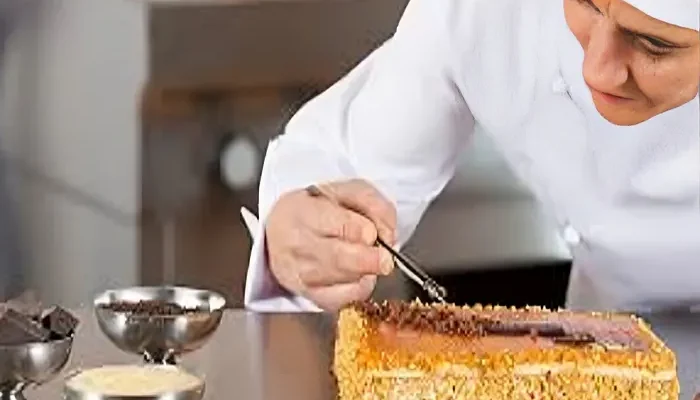Whether you’re a full-blown pastry chef or an at-home baker, you know that chocolate is more than just an ingredient—it’s the star of the show. A perfectly rich chocolate cake or gooey brownie isn’t just about following a recipe; it’s about understanding the chocolate itself. So, how do you decode the countless options on the shelf or online? Let’s crack the chocolate code and find the sweet spot for your baking adventures.
Is All Chocolate Really Created Equal?
The short answer? Nope. Chocolate for baking is in its own league. It’s not the candy bar you grab during a snack attack—it’s designed to perform under heat, mix with other ingredients, and elevate your bakes from good to unforgettable. The big distinction? Cocoa content. But don’t fall into the trap of thinking darker is always better.
Here’s the thing: every recipe has its perfect match. For a silky mousse, you’ll want something smooth and balanced. For brownies that taste like a chocolate lover’s dream, a high-percentage dark chocolate might be your move. But, honestly, some of the best home bakers will tell you that buying chocolate chips in bulk online from iconic brands is the way to go. It’s not just convenient—it’s a cheat code for consistent results.
Still, don’t be afraid to experiment. Some of the greatest recipes happen when you mix up the type of chocolate, combining a bit of bittersweet with semi-sweet for a depth of flavor you didn’t see coming.
What’s the Real Deal with Cocoa Butter?
You’ve probably seen cocoa butter on every fancy chocolate label, but what does it actually mean? In short, it’s the fat from cocoa beans, and it’s the reason why chocolate melts into that dreamy liquid gold when heated. For baking, this matters big time.
When you’re whipping up a ganache or chocolate glaze, higher cocoa butter content equals a smoother, shinier finish. On the flip side, lower-quality chocolate often swaps out cocoa butter for cheap fillers, and that’s when things can get grainy. Nobody’s signing up for grainy brownies.
Here’s the insider trick: always check the label. If cocoa butter sits at the top of the ingredients list, you’re golden. If you see a bunch of unpronounceable words, put it back and keep walking.
How Do You Avoid the Chocolate Apocalypse in Your Pantry?
Baking chocolate is temperamental—not just in recipes, but in storage, too. This is where kitchen storage becomes the unsung hero of chocolate success. You can’t just toss chocolate into any random cabinet and hope for the best. It has feelings.
Heat and humidity? A disaster waiting to happen. Chocolate hates temperature swings, and if you’re storing it next to your oven or in a cupboard that catches afternoon sunlight, you’re sabotaging yourself. Ever seen chocolate turn whitish? That’s blooming, and while it’s harmless, it’s a sign you’ve been slacking on storage.
For perfect conditions, keep your stash in a cool, dark place. No fridge—unless you love dealing with condensation and a ruined temper. Airtight containers are your BFF here. They lock out moisture and funky smells that can sneak into your chocolate and mess with its flavor. Your pantry game needs to be strong if you’re serious about baking.
What’s the Deal with All These Formats?
Bars, wafers, blocks—it’s like chocolate is trying to be the new pasta with all its shapes and sizes. So, what’s the difference? It’s all about how you’re using it.
Bars are versatile and easy to chop, but they take a little extra effort to measure. Wafers melt like a dream and are a go-to for silky ganaches. Blocks? They’re for the hardcore bakers who don’t mind flexing their knife skills.
But here’s the kicker: quality over format always wins. A block of high-end chocolate will outperform a subpar bar every single time. If you’re just starting out, pick a format that feels less intimidating. Nobody’s judging your chopping game—focus on nailing the recipe first.
Can You Really Taste the Difference in Your Bakes?
Absolutely. High-quality chocolate doesn’t just taste better on its own—it transforms your bakes into something that makes people stop mid-bite. It’s the difference between a brownie that’s “good” and one that gets requests for the recipe before dessert is over.
When you invest in better chocolate, you’re investing in your end result. Think about it: chocolate is often the main flavor in desserts, so it deserves the spotlight. It doesn’t mean you need to break the bank, but skipping the bottom shelf and choosing something with solid cocoa content and real cocoa butter pays off in the flavor department.
So the next time you’re cruising the baking aisle or scrolling chocolate products online, stop and think about the flavor adventure you want to create. Because one thing is most certainly true, when it comes to chocolate, the right choice makes all the difference.









Comments